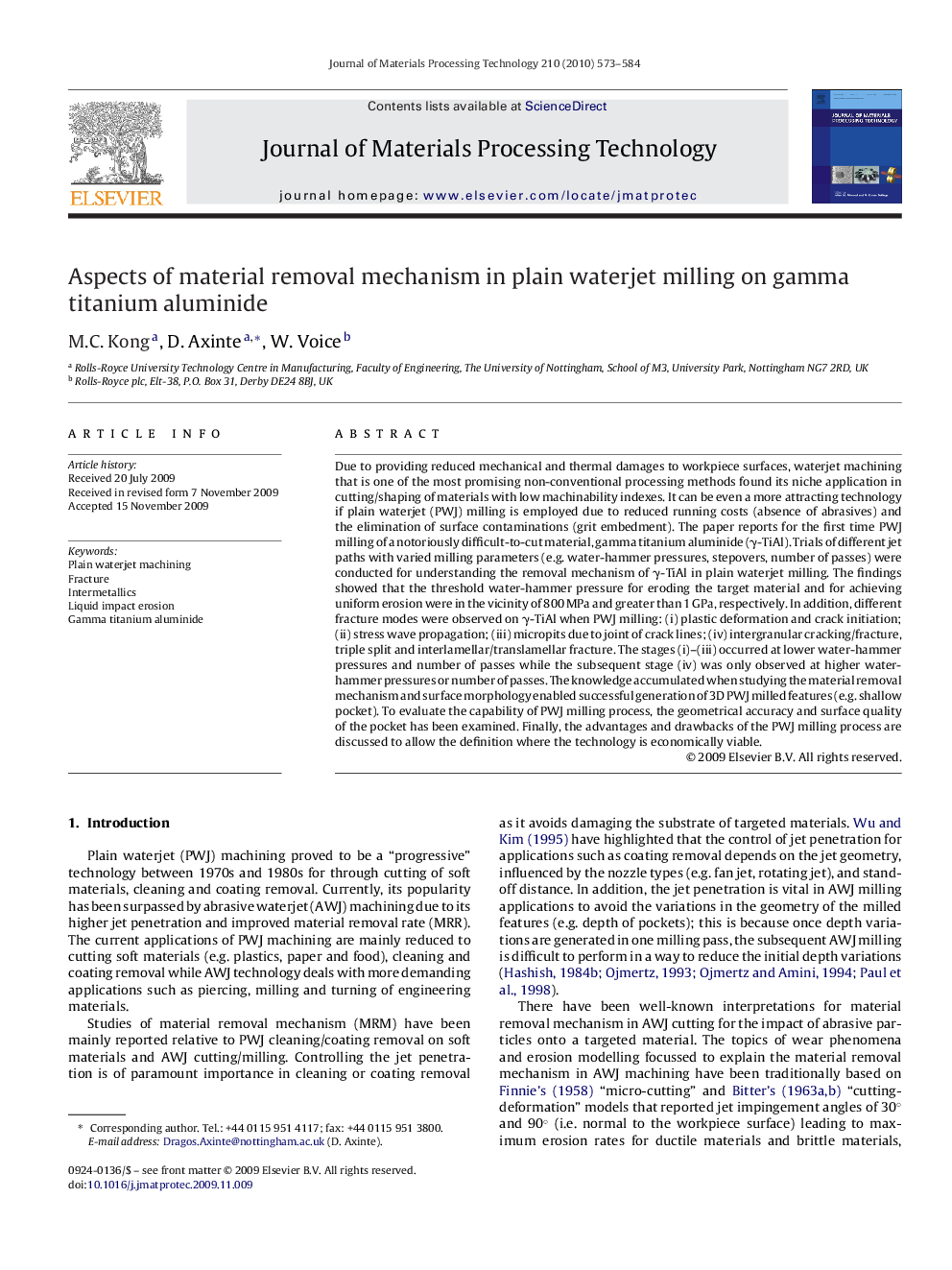| کد مقاله | کد نشریه | سال انتشار | مقاله انگلیسی | نسخه تمام متن |
|---|---|---|---|---|
| 795049 | 902593 | 2010 | 12 صفحه PDF | دانلود رایگان |

Due to providing reduced mechanical and thermal damages to workpiece surfaces, waterjet machining that is one of the most promising non-conventional processing methods found its niche application in cutting/shaping of materials with low machinability indexes. It can be even a more attracting technology if plain waterjet (PWJ) milling is employed due to reduced running costs (absence of abrasives) and the elimination of surface contaminations (grit embedment). The paper reports for the first time PWJ milling of a notoriously difficult-to-cut material, gamma titanium aluminide (γ-TiAl). Trials of different jet paths with varied milling parameters (e.g. water-hammer pressures, stepovers, number of passes) were conducted for understanding the removal mechanism of γ-TiAl in plain waterjet milling. The findings showed that the threshold water-hammer pressure for eroding the target material and for achieving uniform erosion were in the vicinity of 800 MPa and greater than 1 GPa, respectively. In addition, different fracture modes were observed on γ-TiAl when PWJ milling: (i) plastic deformation and crack initiation; (ii) stress wave propagation; (iii) micropits due to joint of crack lines; (iv) intergranular cracking/fracture, triple split and interlamellar/translamellar fracture. The stages (i)–(iii) occurred at lower water-hammer pressures and number of passes while the subsequent stage (iv) was only observed at higher water-hammer pressures or number of passes. The knowledge accumulated when studying the material removal mechanism and surface morphology enabled successful generation of 3D PWJ milled features (e.g. shallow pocket). To evaluate the capability of PWJ milling process, the geometrical accuracy and surface quality of the pocket has been examined. Finally, the advantages and drawbacks of the PWJ milling process are discussed to allow the definition where the technology is economically viable.
Journal: Journal of Materials Processing Technology - Volume 210, Issue 3, 1 February 2010, Pages 573–584